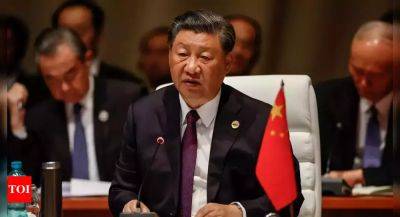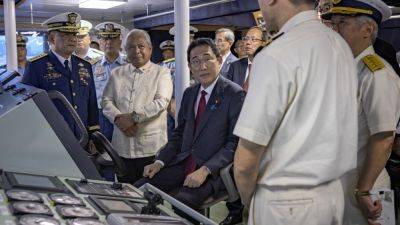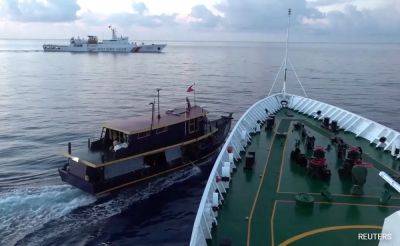South China Sea: Why the Philippines and China are on a collision course
This video can not be played
Watch: Boats collide in South China Sea's disputed waters
Take a close look at a video of Sunday's «collision» between a Philippine coastguard ship and a Chinese maritime militia vessel in the South China Sea.
As the stern of one bumps the deck of the other, right in the middle of the frame is a Filipino television crew scrambling to get what in the business is called an «action piece to camera».
The confrontation between Manila and Beijing over submerged shoals in the South China Sea has been going on for decades.
But in recent months something has changed. The spats at sea are now unfolding in the full glare of the television media. This is the second time in weeks Philippine journalists have filmed a close encounter near a particularly sensitive reef known variously as Second Thomas Shoal, Ayungin Shoal or Ren Ai Reef.
This is no accident. It is part of a deliberate policy by the Philippine government to shine a spotlight on what it has called China's «brute force» in asserting control over what Manila says are its waters.
«I think we've seen a significant change this year. It's what I call an assertive transparency campaign,» says retired Colonel Raymond Powell of Stanford University's Gordian Knot Centre.
Starting in January, the Philippine government began feeding more video of the encounters to local media. By summer it was taking more and more journalists, including the BBC, aboard its boats and aircraft heading out into the disputed waters.
«It's been like turning on a light to show China's grey zone operations,» Col Powell says.
China appears to have been taken aback by these new tactics.
For a while it looked like the strategy was working, says Oriana Skylar Mastro of the Freeman Spogli Institute for International Studies: «We saw a bit of a lull in China's activities.»
Beijing eased off and Manila was able to make several re-supply runs to an outpost it has on Second Thomas Shoal — an aged World War II-era landing ship called the Sierra Madre.
It was deliberately grounded on the reef in 1999. Since then, a tiny contingent of Philippine marines has kept lonely watch aboard the rusting hulk as it has gradually begun to fall







